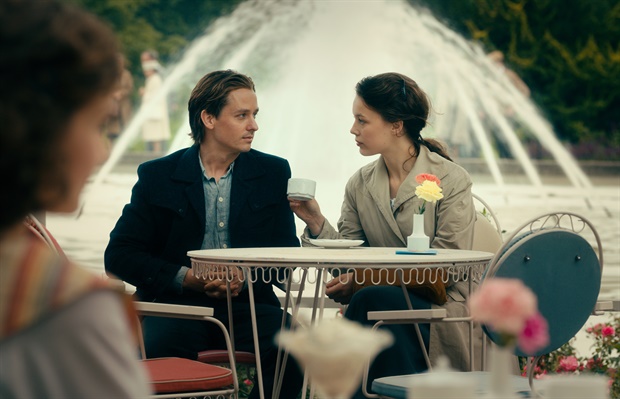Film Review: Donnersmarck’s Never Look Away
 IMDb
IMDb“Constant German madness” is how an eccentric professor of art (Oliver Masucci) describes his country’s recent history in Florian Henckel von Donnersmarck’s new film Never Look Away (Werke ohne Autor). In three rich and rewarding hours, Never Look Away spans three crucial decades, travelling from east to west (and later East to West) and following two families whose lives become entwined in unlikely circumstances.
The film opens in Dresden in 1937, at a Nazi-sponsored “Exhibition of Degenerate Art,” where a disdainful tour guide points out works by Kandinsky and other modernists to a young boy, Kurt Barnert (Cai Cohrs) and his teenaged aunt Elisabeth (Saskia Rosendahl). One whole wall features paintings which take madness as their subject; and indeed art and madness, in their various forms, are two major themes of the film.
Elisabeth, who initially comes across as a sort of 1930s manic pixie dream girl, is soon diagnosed as schizophrenic. The treatment prescribed to her by the icy gynaecologist Professor Carl Seeband (Sebastian Koch) is sterilisation, a Nazi policy not often addressed onscreen. After Elisabeth is dragged away, struggling and screaming, for her operation, the film covers the war years — and the Dresden firestorm — in one excruciating sequence.
We catch up with a young-adult Kurt (Tom Schilling) at art school in 1951, where he meets another Elisabeth (Paula Beer), a fashion design student (whose own career the film later almost completely ignores in favour of Kurt’s). Her father calls her Ellie — and her father’s name, incidentally, is Carl Seeband. Oblivious to their families’ prior connection, Ellie and Kurt embark on a sweetly passionate love affair. But Seeband, recognising Kurt, is convinced that he comes from bad genetic stock, and sets out with ruthless determination to keep the couple apart.
Chilling moments like Seeband’s unflinchingly efficient preparations for an abortion are balanced by moments of gentleness and whimsy, such as Kurt’s brother-in-law purposefully fudging the “Heil Hitler” greeting by saying “Drei Liter” (“three litres”) instead. Similarly, Max Richter’s score is by turns sinister, melancholy, and tender, occasionally interspersed with other music like Françoise Hardy’s charming “Le temps de l’amour” during a mischievous sequence between Kurt and his friends.
The art-historical aspect of the film is sometimes heavy-handed — a long, peppy tour through the cutting-edge Düsseldorf Academy essentially serves as “German Avant-Garde for Dummies,” showcasing everything from slashed canvases to potato pendulums. But later, quieter moments provide intimate close-ups of brushstrokes on canvas which speak to a true and simple love of art in all its forms. The film’s climax is an extended painting sequence, accompanied by hopeful orchestration that builds to joyousness as Kurt at last finds his artistic vision — looking not to the Socialist or avant-garde future, but rather to the past.
“German madness” took many forms throughout the twentieth century, and this film treats many of them, from the innocent — artistic innovation — to the inhumane: the war, the camps, the sterilisation and murder of hundreds of thousands. Donnersmarck never shies from recounting his country’s grisly recent past, often in such stark detail that we are tempted to hide our eyes. But Elisabeth’s appeal to her young nephew Kurt is equally addressed to the viewer, German or otherwise: this is truth, this is history — we must stare it in the face, and “never look away.”




